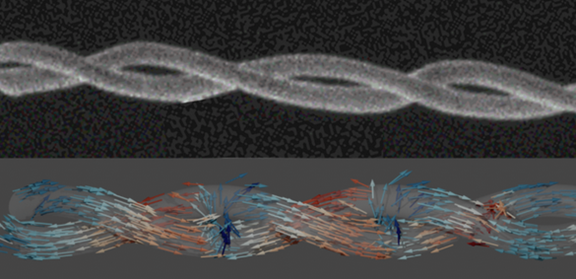
3D Printed Nanomagnets Unveil A World Of Magnetic-field Patterns
An international team of scientists used 3D printing and microscopy to glimpse what happens when taking magnets to three dimensions on the nanoscale, 1000x smaller than a human hair. Led by Cambridge University’s Cavendish Laboratory, they used advanced 3D printing techniques they developed to create magnetic double helices, which twist around one another, combining curvature, chirality, and strong magnetic field interactions between the helices. The double helices were found to produce nanoscale topological textures in the magnetic field, which has never been seen before. The results are published in Nature Nanotechnology.
Magnets are used to generate energy, data storage, and computing. For the next generation of computing, there is growing interest in moving to three dimensions for higher densities.
